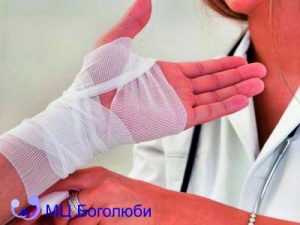Hygroma - is a cystic formation filled with synovial fluid, similar to a «bump». No one is safe from the appearance of this benign tumor, it often arises without any obvious reasons, but it can be successfully treated.
Hygroma occurs twice as often in women, mainly between the ages of 25 and 35. Formations are formed in any areas, but the distal parts of the limbs are the preferred places of localization.
Causes of hygroma
Despite the prevalence and numerous scientific studies, the true causes of the manifestation of the disease have been studied not much. There are suggestions that a number of factors contribute to the development of hygroma. In particular, this is a genetic predisposition. Statistics also indicate that a third of clinical cases were preceded by injury. There are clear links between the progression of gigrom and high physical exertion. Interestingly, if the load is limited, the tumor may stop growing.
Symptoms of hygroma
In particular, this is a genetic predisposition. Statistics also indicate that a third of clinical cases were preceded by injury. There are clear links between the progression of gigrom and high physical exertion. Interestingly, if the load is limited, the tumor may stop growing. .
The early stages of the disease are asymptomatic. But over time, the skin begins to swell at the site of localization and painful sensations appear in the surrounding tissues after physical exertion. Further, the hygroma grows and presses on nearby vessels, which is already fraught with constant aching pains.
Hygroma can be both single and multiple, both soft and dense formations. But they all have clear boundaries. In the case of placement under the ligamentous apparatus, the tumor may not detect itself for a long time. In this case, the patient seeks medical help because of pain when trying to take something. The skin above the hygroma usually does not undergo any changes, but sometimes peeling, roughness and redness can begin. The size of the tumor reaches a diameter of three to six centimeters, it is not predisposed to malignant degeneration.
Diagnosis of hygroma
For an experienced surgeon, the diagnosis is not difficult. In case of suspicion of a neoplastic process, a tissue biopsy is indicated. Computer tomography, ultrasound and radiography may also be prescribed to rule out osteoarticular pathology.
Treatment of hygroma
Hygroma can be treated both using conservative methods and surgical intervention. The simplest therapeutic method is puncture. After evacuation of the contents, corticosteroid hormones are introduced into the bag. But it is important to know that hygromas tend to recur. In 80% of cases after conservative therapy, repeated growth of the tumor is observed. With surgical removal of formations, only 20% hygroma recurs.
Indications for surgery are:
- pain, both at rest and during movement;
- joint mobility is limited;
- aesthetically unattractive appearance of limbs;
- fast growing of hygroms.
In Bogoliuby MC the optimal method of removal (with a scalpel, endoscope or laser) is selected by the surgeon based on the patient’s history. And only a specialist after a diagnostic examination will be able to determine whether there really is a need for surgical intervention, or an ordinary puncture.
Hygroma prevention
Uniquely effective methods to prevent the formation of hygroma, not yet been developed. It’s due to the fact that the causes of the disease are not well understood. But attention to any injury will not be superfluous, and try to avoid monotonous statistical loads. During exercise, it is recommended to use an elastic bandage to fix the joints.
Consequences of hygroma
Although the overall prognosis of the disease is positive, it is impossible not to mention the possible consequences. If untreated, the hygroma can grow, a cosmetic defect becomes apparent. In case of her injury, rupture of the membrane and suppuration is possible.
















